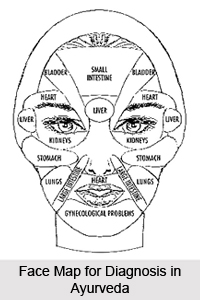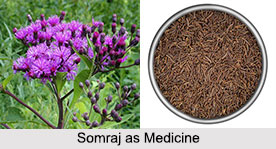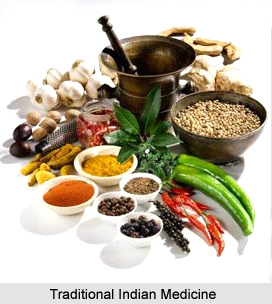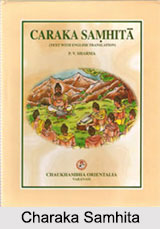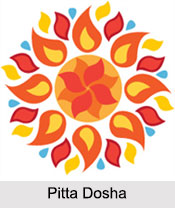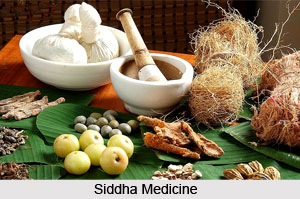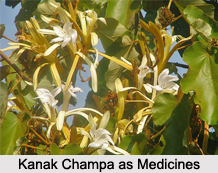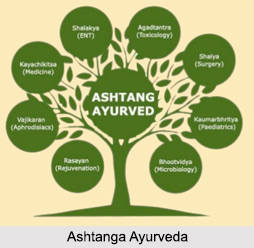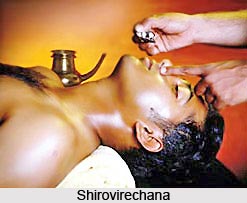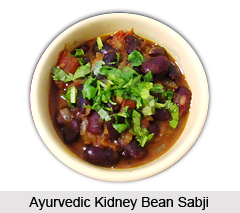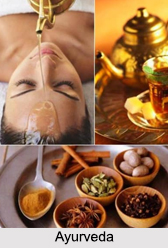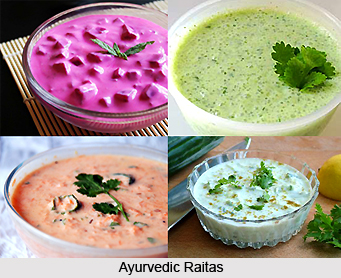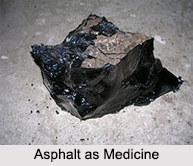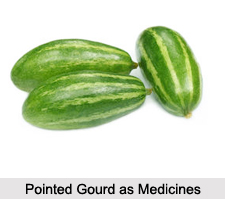 Strotas or Channels of body circulation consist of both gross channels like the intestinal tract, lymphatic system, arteries, veins and the genitor-urinary tracts and subtle channels like the capillaries. In Ayurveda the diagnosis of all diseases are based on which of the individual doshas are compromised and which channels are obstructed. A disease originating from one vitiated dosha is able to travel through the channels to the site of another dosha. Excess of dosha can create channel blockages thereby obstructing their normal flow.
Strotas or Channels of body circulation consist of both gross channels like the intestinal tract, lymphatic system, arteries, veins and the genitor-urinary tracts and subtle channels like the capillaries. In Ayurveda the diagnosis of all diseases are based on which of the individual doshas are compromised and which channels are obstructed. A disease originating from one vitiated dosha is able to travel through the channels to the site of another dosha. Excess of dosha can create channel blockages thereby obstructing their normal flow.
Men have thirteen groups of channels and women have fifteen groups of channels. Thirteen channels are common to both men and women. The first three are the channels through which the air, food, and water pass through. These are governed by Vata, Pitta, Kapha.
13 Strotas or Channels of body Circulation
The body`s air channels have its origin in the heart and the alimentary tract and conduct pranic force and vitality through the respiration and circulation systems. It becomes impaired by the controlling natural bodily urges, by ingesting dry food and by excessive physical exercise. Symptoms expressed by impaired air channels are shallow and restricted breathing, fear, anxiety and nervousness.
Food channels or annavahastrotas originate in the stomach and carry food through the digestive system. Untimely eating or excessive food consumption, unhealthy foods and low digestion cause vitiation of these channels. The symptoms are loss of appetite, indigestion, vomiting, anorexia and greed.
Water channels or udakavahastrotas have its origin in the appetite and pancreas thereby regulating the body fluid. These passages are obstructed if there is excessive exposure to heat, excessive use of alcohol or other addictives and ingesting dry foods. The symptoms of impairment are excessive thirst, dryness of lips, throat, tongue and palate, selfishness and dullness.
The following seven groups of channels serve each of the body`s seven dhatus. Plasma channels or rasavahastrotas originate in the heart and several blood vessels and transport chyle and plasma to the rasa dhatu all over the body. Stress, grief and excessive colsd and fatty foods obstruct these passages. The symptoms of vitiations are anorexia, drowsiness, nausea, fainting and anaemia, impotency, stress and grief.
Blood channels or raktavahastrotas originate in the liver and spleen and transport blood to the rakta dhatu all over the body. This group of channels is often referred to as the circulatory system. The impairment of this system is caused by hot and oily foods, excessive exposure to the sun or fire and radioactivity. The symptoms are skin diseases and rashes, excessive bleeding and inflammation of the genital organs and anus. Emotional symptoms include anger, dullness and aggressiveness.
Muscular channels or mamsavahastrotas originate in the ligaments, tendons and skin. Nutrients are supplied to the muscle dhatu. Impairment of these channels is due to regular intake of heavy, greasy foods, excessive sleep, sleeping after meals, and sedentary lifestyle. The symptoms are usually benign tumors that are produced by the muscular system, tonsillitis, a swollen uvula, hemorrhoids, and swelling of the thyroid glands and adenoids. The emotional symptoms are lack of mental clarity and nervous tension.
Fat channels or medavahastrotas or the adipose system, originate in the kidneys and the omentum. It supplies fat tissue ingredients to the Meda dhatus all over the body. Impairment of this system is due to suppression of digestive activities and excess of fatty foods, alcohol and other addictives. The symptoms of difficulty are generally diabetes, urinary disorders and possessiveness.
Bone and Cartilage Channels or asthivahastrotas or the skeletal system, begin in the hipbone and supply nutritive ingredients to the bone and cartilage dhatus all over the body. Impairment of these channels is caused by excessive activity, friction of the bones, and excessive intake of food which is dry. Some symptoms are dry flaky nails and decaying teeth, painful joints, dry and thinning hair and feelings of deprivation and fear.
Bone Marrow Channels or majjavahastrotas or the central nervous system supply the marrow and nerve tissue nutrients to the bone marrow all over the body. Impairment of the bones and joints is caused by consumption of uneasy combination foods or hot and cold substances taken together, trauma and injury, which affect the bone marrow. The symptoms of vitiation are fainting, dizziness, loss of memory.
Ovum and Sperm Channels or shukravahastrotas are subtler than the preceding channel groups. It has its origin in the testes and ovaries. It transports the semen, ovum and ojas essence to the male and female tissues. Impairment of these passages is normally the result of excessive or suppressed sex, unnatural sex, sex at improper times like during menstruation and pregnancy, drug addictions and abortions. The symptoms are impotency, infertility and defective pregnancy.
The remaining groups of channels are the body`s three elimination systems. Urinary Channels or mootravahastrotas originate in the kidneys and bladder that eject urine from the body. Impairment of these channels is caused by the suppression of urination. The symptoms are excessive, scanty, or frequent urination, as well as fears, anxieties and nervousness.
Excretory Channels or purishvahastrotas or the excretory system, originate in the colon and rectum. They evacuate feces from the body. Vitiation of these channels is caused by weak digestive fire, eating before the previous meal is digested, suppression of defecation. The symptoms of affliction are usually diarrhea, constipation. The emotional symptoms are excessive attachment, dullness, and fear.
Sweat Channels or swedavahastrotas is the last of the excretory channels also known as the sebaceous system. It originates in the fat tissue and hair follicles and drives out sweat from the body. Impairment of these channels is caused by excessive activity, heat, spicy foods, acidic foods, excessive alcohol, addictives, grief, fear and anger. The symptoms of are excess perspiration or no perspiration, rough and dry skin, burning sensation of the skin, aggressiveness and dullness.
Two additional channels exist within the female body. They are the menstrual channels that expels blood, secretions and tissue debris from the uterus and the breast milk channel, which carries milk to mother"s breast. These two channels are both part of the plasma channel. When the channels are blocked, their corresponding doshas become impaired.






